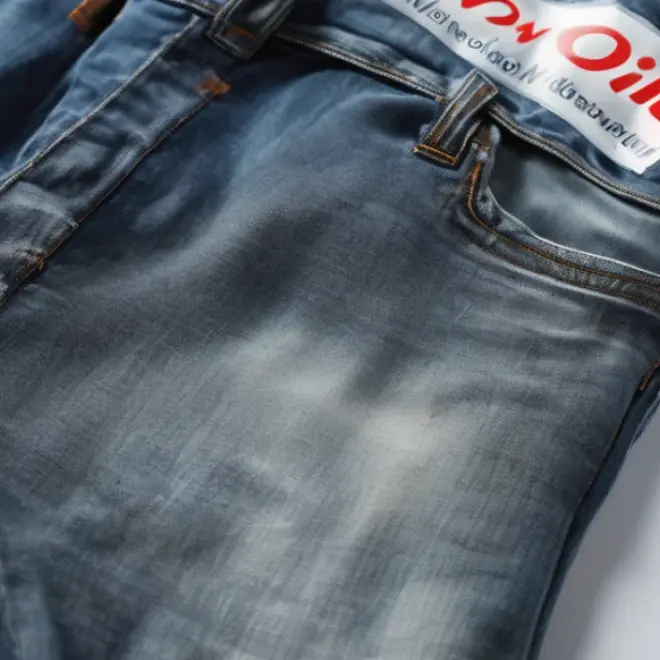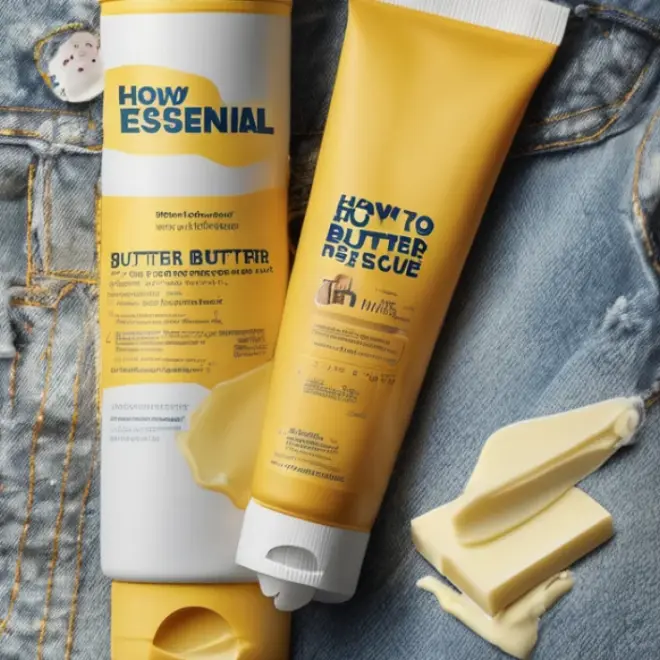Quick Summary: Discover effective ways to remove spray paint from your favorite black jeans. With simple household items and patient application, you can restore your denim and save your black jeans from unwanted splatters. This guide offers proven methods for a clean finish.
How to Remove Spray Paint: Proven Black Jean Savior
Accidents happen, and sometimes a rogue spray paint can leaves its mark right on your beloved black jeans. It’s a common frustration, but before you relegate those jeans to the rag pile, know that they can often be saved. This guide will walk you through simple, effective methods to tackle those stubborn paint splatters. We’ll cover everything from readily available household items to more specialized solutions, ensuring you can confidently restore your denim.
Understanding Spray Paint and Denim
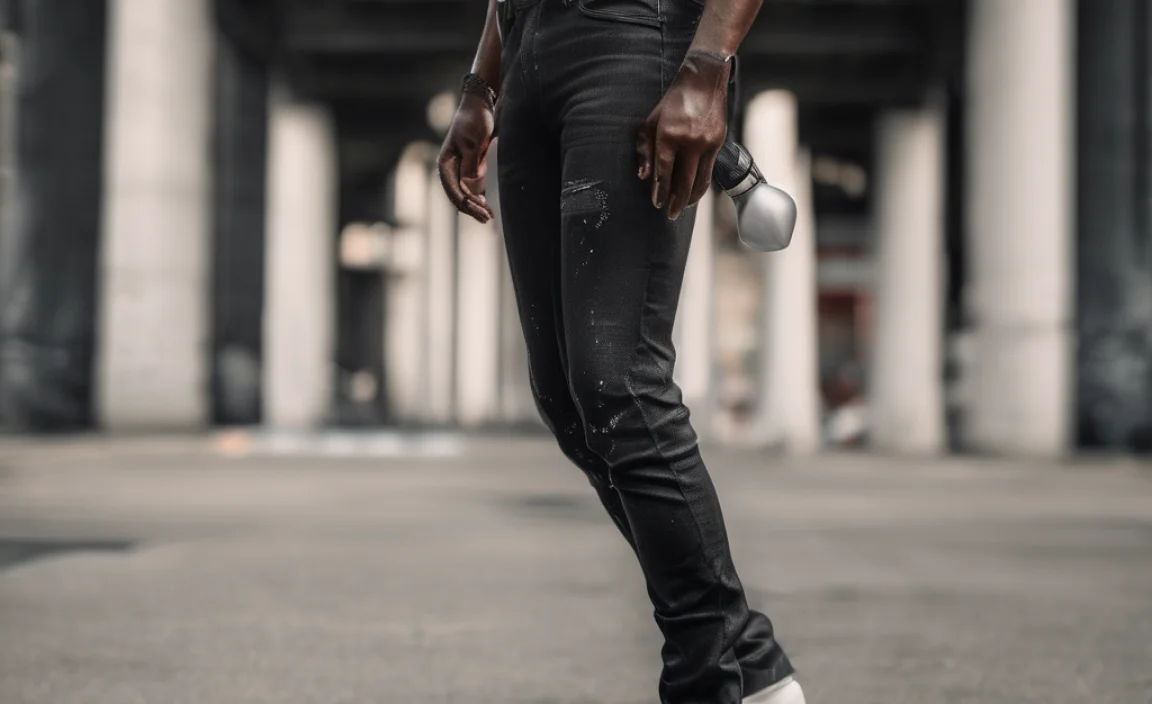
Spray paint is designed to adhere strongly to surfaces, which is why it can be a challenge to remove from fabric. The effectiveness of any removal method depends on several factors:
- The type of spray paint used (water-based vs. solvent-based).
- How long the paint has been on the fabric.
- The type of denim and its weave.
- The methods and products you choose.
Generally, fresher paint is easier to remove than dried, set-in paint. However, even older stains can often be lightened or removed with the right approach and a bit of persistence.
Essential Tools and Supplies
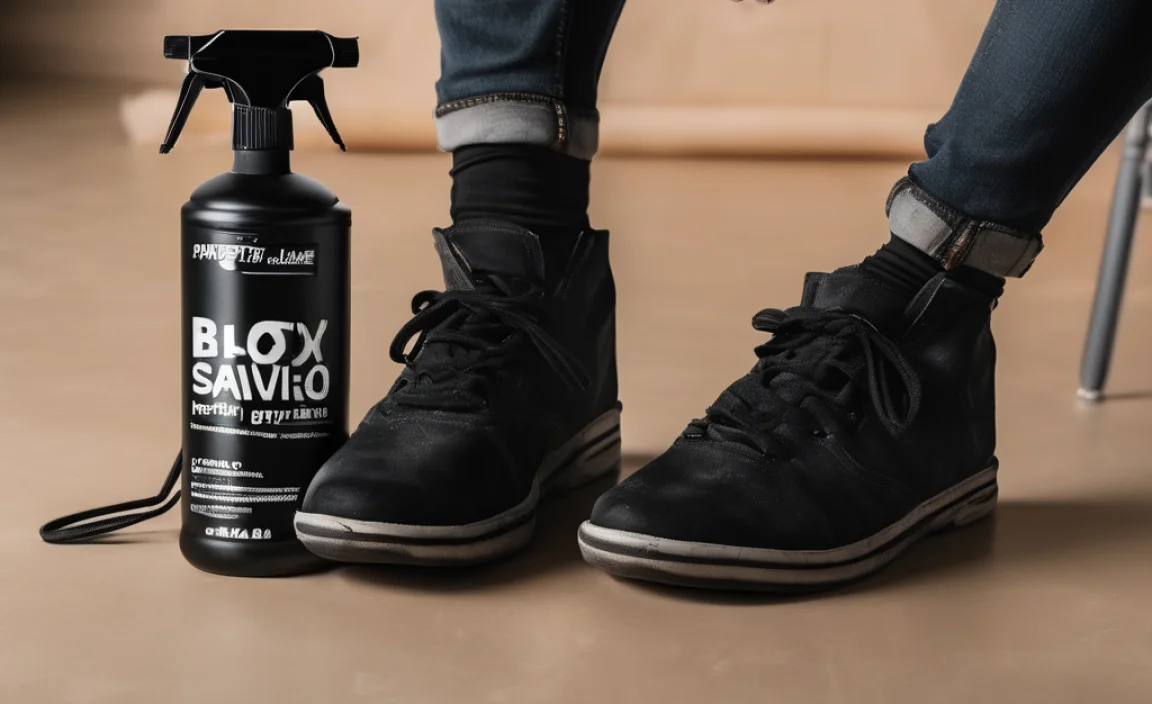
Gathering the right supplies before you start will make the process smoother. Here’s what you might need, depending on the method you choose:
- Clean cloths or old rags
- Paper towels
- Rubbing alcohol (isopropyl alcohol)
- Nail polish remover (acetone-based)
- Dish soap
- Baking soda
- White vinegar
- Denatured alcohol
- A soft-bristled brush (like an old toothbrush)
- Scraper or dull knife
- Gloves (to protect your hands)
- A well-ventilated area
Initial Steps: Act Fast!

The sooner you address the spray paint stain, the better your chances of complete removal. If the paint is still wet:
- Blot, don’t rub. Use a clean cloth or paper towel to gently blot up as much wet paint as possible. Rubbing can spread the paint and push it deeper into the fabric fibers, making it harder to remove.
- Work from the outside of the stain inwards to prevent spreading.
Method 1: Rubbing Alcohol (Isopropyl Alcohol)
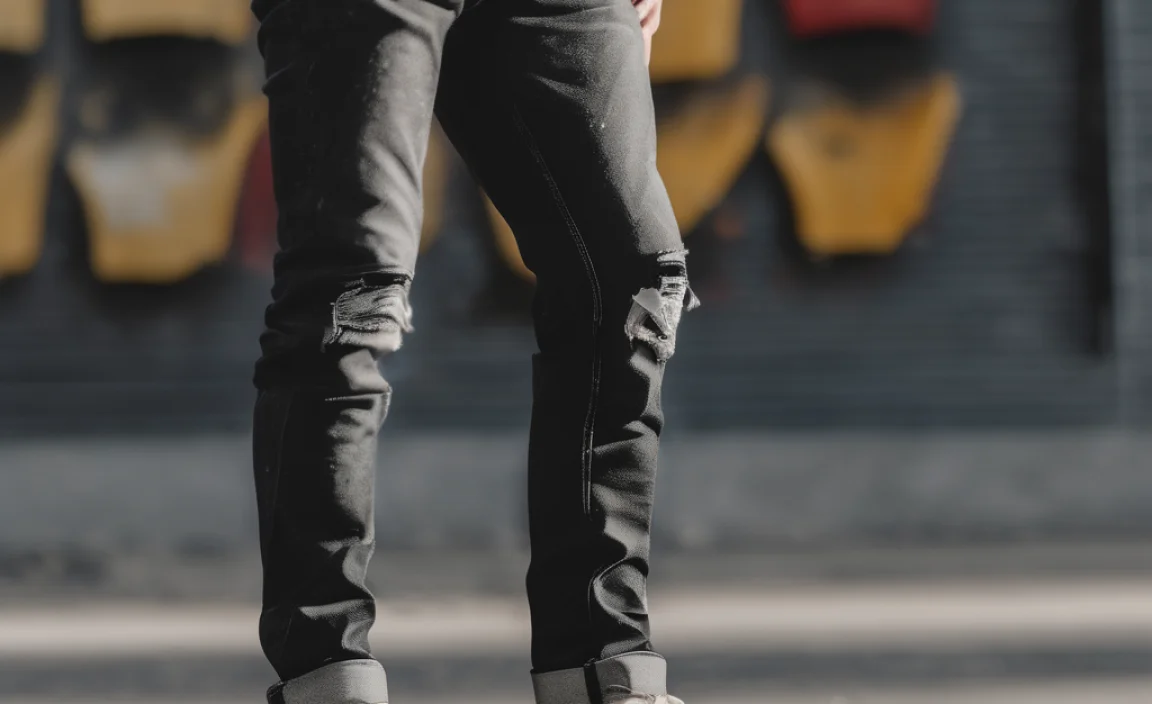
Rubbing alcohol is a common household item that can be surprisingly effective at breaking down many types of spray paint. It works well for both recent and slightly dried spots.
What You’ll Need:
- Rubbing alcohol (70% isopropyl alcohol or higher)
- Clean cloths or paper towels
- Gloves
- A soft-bristled brush (optional)
Steps:
- Prepare your workspace: Lay the affected part of the jeans flat on a layer of paper towels or an old towel. Place more paper towels underneath the stained area to catch excess liquid and paint. Ensure you are in a well-ventilated area.
- Test a small area: Apply a small amount of rubbing alcohol to an inconspicuous part of the jeans (like an inner seam) to ensure it doesn’t damage or discolor the black denim. Wait a few minutes and check.
- Apply the alcohol: Dampen a clean cloth or cotton ball with rubbing alcohol.
- Dab the stain: Gently dab the sprayed area with the alcohol-soaked cloth. Start from the edges of the stain and work your way in. You should see the paint begin to lift onto the cloth.
- Rinse and repeat: As the cloth picks up paint, switch to a clean section of the cloth or a new one. Continue dabbing until no more paint transfers to your cloth. You may use a soft-bristled brush to gently agitate stubborn paint after applying alcohol.
- Rinse the area: Once you’ve removed as much paint as possible, rinse the treated spot with cool water.
- Wash as usual: Launder the jeans according to their care label.
- Inspect before drying: Check if the stain is gone. If it persists, repeat the process. Do NOT put the jeans in the dryer until the stain is completely removed, as heat can set the stain permanently.
Method 2: Acetone-Based Nail Polish Remover

Acetone is a strong solvent that can dissolve many paints. However, it’s also aggressive and can potentially affect dyes or fabric finishes, so a patch test is crucial. Use this method with caution, especially on delicate denim.
What You’ll Need:
- Acetone-based nail polish remover
- Clean cloths or cotton balls
- Gloves
- Paper towels
Steps:
- Ventilation is key: Work in a well-ventilated area, as acetone fumes can be strong.
- Protect the fabric and your hands: Wear gloves. Lay the jeans on paper towels, with more underneath the stained area.
- Perform a patch test: Apply a tiny amount of acetone to an inside seam or hidden area of the jeans to check for any adverse effects on the color or fabric. Allow it to dry completely before proceeding.
- Dab gently: Moisten a cotton ball or corner of a clean cloth with acetone. Lightly dab the spray paint spot. Avoid oversaturating the fabric.
- Work carefully: The paint should start to break down. Use fresh parts of the cotton ball or cloth as paint transfers. Blotting gently is more effective than scrubbing.
- Rinse thoroughly: Once you’ve removed as much paint as possible, rinse the treated area extensively with cool water.
- Wash the jeans: Launder the jeans as you normally would.
- Air dry and inspect: Check the stain before using a dryer. Repeat if necessary.
Method 3: Dish Soap and Baking Soda Paste
For lighter stains or as a gentler alternative, a paste made from dish soap and baking soda can be helpful. Baking soda acts as a mild abrasive, and dish soap helps lift the paint.
What You’ll Need:
- Liquid dish soap
- Baking soda
- Water
- A soft-bristled brush
- Clean cloths
Steps:
- Mix the paste: In a small bowl, combine 2 parts baking soda with 1 part liquid dish soap. Add a tiny amount of water if needed to create a thick, spreadable paste.
- Apply the paste: Spread the paste generously over the spray paint stain.
- Let it sit: Allow the paste to sit on the stain for at least 30 minutes, or longer for tougher spots.
- Gently scrub: Use a soft-bristled brush (like an old toothbrush) to gently scrub the paste into the stain in a circular motion.
- Rinse: Rinse the area thoroughly with cool water.
- Wash: Launder the jeans as usual.
- Check and repeat: Inspect before drying. Repeat if the stain is still visible.
Method 4: Denatured Alcohol
Denatured alcohol is another solvent that can be effective. It’s often used for cleaning paint brushes and can break down dried paint. Like acetone, it requires a patch test.
What You’ll Need:
- Denatured alcohol
- Clean cloths or cotton balls
- Gloves
- Paper towels
Steps:
- Safety first: Work in a well-ventilated space and wear gloves.
- Patch test: Apply a small amount of denatured alcohol to an inconspicuous area of the jeans to check for color fastness.
- Apply to stain: Dampen a cloth or cotton ball with denatured alcohol and gently dab the spray paint.
- Lift the paint: Blot the stain, changing to clean sections of the cloth as paint lifts. You can use a dull knife or scraper to gently lift any particularly sticky or thick areas after they’ve been softened by the alcohol.
- Rinse well: After removing excess paint, rinse the area thoroughly with cool water.
- Launder: Wash the jeans as usual.
- Inspect before drying: Ensure the stain is gone before putting them in the dryer.
Method 5: WD-40 (Use with Caution)
WD-40 can sometimes help break down stubborn spray paint. However, it can also leave an oily residue, so it’s essential to follow up with a thorough wash. This is generally an option when other methods have failed.
What You’ll Need:
- WD-40
- Clean cloths or paper towels
- Dish soap
- Soft-bristled brush
- Gloves
Steps:
- Ventilation: Ensure you are in a well-ventilated area.
- Protect: Lay the jeans on paper towels or an old towel.
- Apply WD-40: Spray a small amount of WD-40 directly onto the paint stain. Let it sit for 10-15 minutes to allow it to work on the paint.
- Gently scrape/blot: Use a dull knife or old credit card to gently scrape away loosened paint. Then, use a clean cloth to blot the stain.
- Treat the oily residue: Immediately apply a generous amount of liquid dish soap directly to the WD-40 treated area. Gently rub it in with your fingers or a soft brush to break down the oil.
- Rinse: Rinse the area thoroughly with cool water.
- Wash: Launder the jeans immediately in the washing machine with your regular detergent, perhaps with an extra rinse cycle.
- Air dry and check: Inspect the jeans carefully. If any oily marks remain, repeat the dish soap treatment before drying.
What About Dried, Old Spray Paint?
Dried spray paint is more challenging, but not impossible. The key is to soften the paint first. Methods involving solvents like rubbing alcohol or denatured alcohol, or even carefully applied acetone, are usually the most effective for dried paint. Patience is crucial; you may need multiple applications and gentle agitation.
For very stubborn, dried paint, you might consider a specialized paint remover designed for fabric. Always follow the product’s instructions precisely and perform a patch test. Reputable sources often recommend products like Goo Gone or specific fabric stain removers for paint.
The U.S. Environmental Protection Agency (EPA) provides information on chemical safety and proper disposal, which is relevant when using solvents. While they don’t offer specific fabric removal advice, understanding the properties of the chemicals you’re using is always a good practice.
| Method | Pros | Cons | Best For |
|---|---|---|---|
| Rubbing Alcohol | Readily available, effective on many paints, relatively safe with testing. | May require multiple applications, can affect some dyes if not tested. | Fresh and moderate stains. |
| Acetone (Nail Polish Remover) | Strong solvent, can break down tough paint. | Harsh, can damage fabric or remove color, strong fumes, requires extreme caution and testing. | Stubborn, dried paint, as a last resort after testing. |
| Dish Soap & Baking Soda Paste | Gentle, uses common household items, mildly abrasive. | Less effective on tough, dried paint. | Light stains, fresh paint, as a first-try gentle method. |
| Denatured Alcohol | Effective solvent for tougher paint. | Requires ventilation and testing, can affect fabric. | Dried or stubborn paint. |
| WD-40 | Can loosen very stubborn paint. | Leaves oily residue that must be completely removed, requires diligent cleaning afterwards. | Very tough, dried paint, when other methods fail. |
Tips for Protecting Your Black Jeans
When dealing with spray paint or any stain on dark-colored denim, keep these tips in mind:
- Always patch test your chosen cleaning solution on an inside seam or less visible area of the jeans. Black dye can sometimes be sensitive to certain chemicals.
- Work from the outside in when dabbing or blotting a stain to prevent it from spreading.
- Use white or light-colored cloths for blotting. This makes it easier to see how much paint is transferring and whether the stain is lifting.
- Avoid excessive scrubbing, especially with harsh chemicals, as this can damage the denim fibers or create a worn-looking spot.
- Patience is key. Some stains require multiple attempts and time to lift completely.
- Never dry jeans in a machine dryer if a stain is still visible. The heat will set the stain permanently. Always air dry and re-evaluate.
Frequently Asked Questions
Q1: Can I use a regular household cleaner for spray paint on jeans?
A1: Some mild cleaners with degreasing properties, like dish soap, can help with very fresh, light paint. However, for most spray paints, stronger solvents like rubbing alcohol or specialized removers are more effective.
Q2: Will these methods remove color from my black jeans?
A2: There’s a risk with any stain removal product, especially solvents like acetone. Always perform a patch test on an inconspicuous area first to ensure the product doesn’t lift the black dye from your denim. Gentle methods are less likely to cause color loss.
Q3: How long should I leave the cleaning solution on the stain?
A3: For rubbing alcohol or acetone, you typically dab and work the stain until it lifts. For baking soda paste, leaving it on for 30 minutes to an hour can be beneficial. Always follow product instructions for commercial removers.
Q4: What if the paint is on a painted-on design or graphic on my jeans?
A4: This is much trickier. Most removal methods will also damage or remove painted designs. It’s generally best to avoid treating painted designs directly. If the paint is on the design, trying to carefully remove it might ruin the design itself. You may have to accept the imperfection or consider it part of a distressed look.
Q5: Can I use a bleach pen on black jeans?
A5: Absolutely not. Ble





